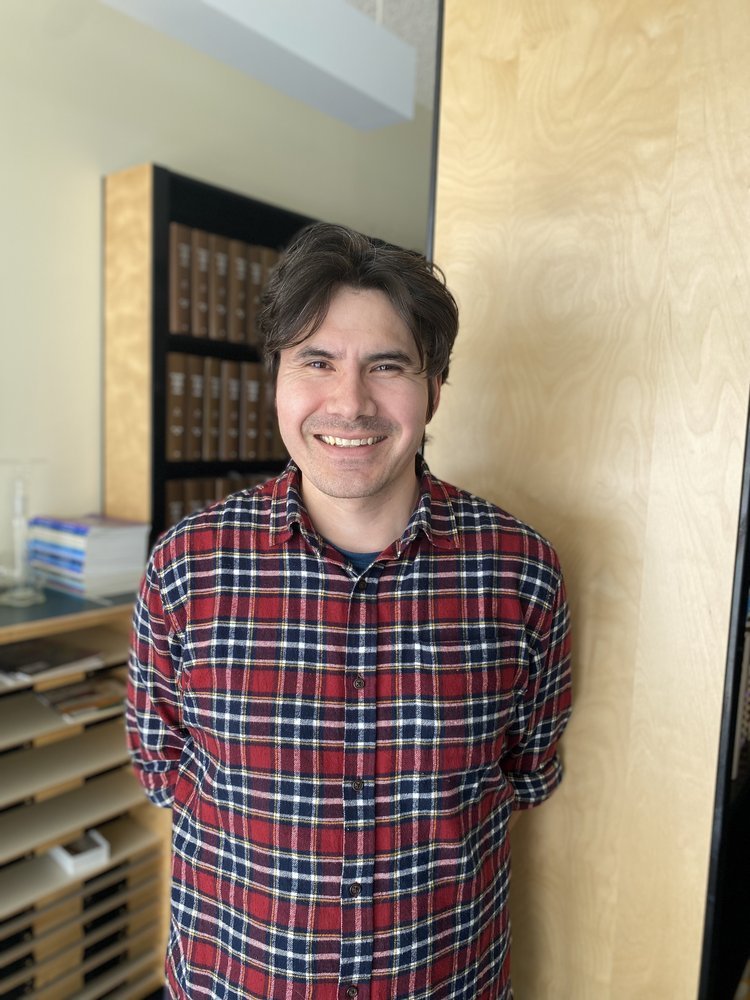Moses Leavens, PhD
Assistant Professor
Education
Postdoctoral fellow, Lab of Neurological Infections and Immunity, NIAID, NIH
M.S., Ph.D., Biochemistry & Biophysics, University of Montana
B.A., B.S. Biology, Chemistry, Mathematics, University of Providence
A.S. General Education, Great Falls College, Montana State University

-
Moses Leavens joined the McLaughlin Research Institute in 2022 and Touro College of Osteopathic Medicine Montana in 2023 as an assistant professor. He received his PhD degree in Biochemistry & Biophysics in 2019 with Bruce Bowler at the University of Montana. From 2019-2022, he was a National Institutes of Health (NIH) postdoctoral research fellow in the lab of Byron Caughey at National Institute of Allergy and Infectious Diseases/Rocky Mountain Laboratories. Dr. Leavens is a biochemist with research interests in neurodegenerative disease proteinopathies, protein folding, and biomarkers.
-
Research in the Leavens lab focuses on protein misfolding
Our work on protein misfolding emphasizes seeded conversion of recombinant substrates to proteopathic seeds in human and animal model tissues. The ultimate goal of this research is to understand shared molecular mechanisms in protein misfolding diseases, examine potential biomarkers, and elucidate new therapeutic targets.
-
Complete list of published work.
Research in the Leavens lab focuses on protein misfolding
Our work on protein misfolding emphasizes seeded conversion of recombinant substrates to proteopathic seeds in human and animal model tissues. The ultimate goal of this research is to understand shared molecular mechanisms in protein misfolding diseases, examine potential biomarkers, and elucidate new therapeutic targets.
Check out Dr. Leavens’s work on protein unfolding here.
What is Parkinson’s Disease?
Parkinson's disease (PD) is a chronic and progressive movement disorder, meaning that symptoms continue and worsen over time. Nearly one million people in the US are living with Parkinson's disease. The cause is unknown, and although there is presently no cure, there are treatment options such as medication and surgery to manage its symptoms.Parkinson’s involves the malfunction and death of vital nerve cells in the brain, called neurons. Parkinson's primarily affects neurons in the an area of the brain called the substantia nigra. Some of these dying neurons produce dopamine, a chemical that sends messages to the part of the brain that controls movement and coordination. As PD progresses, the amount of dopamine produced in the brain decreases, leaving a person unable to control movement normally.The specific group of symptoms that an individual experiences varies from person to person. Primary motor signs of Parkinson’s disease include the following.
tremor of the hands, arms, legs, jaw and face
bradykinesia or slowness of movement
rigidity or stiffness of the limbs and trunk
postural instability or impaired balance and coordination
Scientists are also exploring the idea that loss of cells in other areas of the brain and body contribute to Parkinson’s. For example, researchers have discovered that the hallmark sign of Parkinson’s disease — clumps of a protein alpha-synuclein, which are also called Lewy Bodies — are found not only in the mid-brain but also in the brain stem and the olfactory bulb.These areas of the brain correlate to nonmotor functions such as sense of smell and sleep regulation. The presence of Lewy bodies in these areas could explain the nonmotor symptoms experienced by some people with PD before any motor sign of the disease appears. The intestines also have dopamine cells that degenerate in Parkinson’s, and this may be important in the gastrointestinal symptoms that are part of the disease.
Amyotrophic Lateral Sclerosis (ALS)
Amyotrophic lateral sclerosis (ALS), also known as Lou Gehrig's Disease, is a rare neurological disease that affects motor neurons—those nerve cells in the brain and spinal cord that control voluntary muscle movement. Voluntary muscles are those we choose to move to produce movements like chewing, walking, and talking. The disease is progressive, meaning the symptoms get worse over time. ALS has no cure and there is no effective treatment to reverse its progression.
ALS is a type of motor neuron disease. As motor neurons degenerate and die, they stop sending messages to the muscles, which causes the muscles to weaken, start to twitch (fasciculations), and waste away (atrophy). Eventually, the brain loses its ability to initiate and control voluntary movements.



